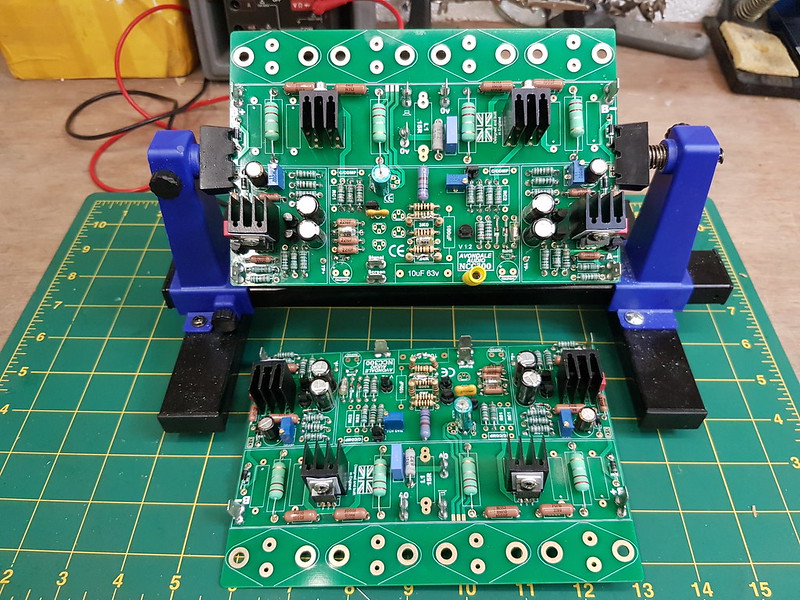Well done Graham, I'm well pleased for you.
This design is a league on from the Voyager where the strategy of treating the front
end is akin to giving a pre-amp its own power supply. The limiting factor of the
Voyager is the safe operating area limits of the output devices and whereas the
NCC200s will take the BUV20 series which, on copper heatspreaders will top out
at over 100Watts, the NCC220s are somewhat limited by the non-availability of
high current PNP devices.
I have looked at overall regulation over the years and whilst it offers some degree
of protection for the output devices, the supply of current at every part of the
frequency band is a hit-and-miss affair once the speaker impedance is taken into
account and the intermod products are difficult, if not impossible to remove, possibly
another contributor to the characteristic 'Naim sound'.
The NCC300s have no such hobbling as the paralleled devices easily outstrip the
SOA of a single pair of TO3s and interestingly, fail to exhibit the sonic horrors once
predicted by Naim when using such topology. I point of fact, the newest amps
appear to use series/parallel configuration to achieve their output figures.
It is possible with the NCC300, if I rejig the drive circuits, to up the power
considerably by using output devices in triplicate - 2SA/2SC series for instance.
It seems I have a NAP300 slayer in the stable and that's the beast I'm gunning for.
The earlier NAP135s are in abundance and well loved by their owners who, when
faced with the prospect of stumping up many £thousands for the NAP300, would
rather soldier on with their 135s. These amps were built with totally overkill
power supplies of which only a miniscule fraction of their capability is used
during operation. The build of the amp with the large toroid, big-can caps and
a fan assisted heatsink seems to promise a staggering performance.
Nothing can be further from the truth - it's only a few hops ahead of the NAP250
and as with most amps of the era, fails to get a grip on the popular speakers of
the day such as Linn Isobariks.
Listening to the needs of the market here's a more economical way of upgrading the
135 at a fraction of the factory alternative plus, adding what Graham has described
as texture but retaining the grunt and control - mainly I reckon, the result of the
front end regulator system. One of the first pairs of so-converted 135s are being
auditioned by a specialist in Briks and I'll be posting reactions on here.
I'll watch the project roll on as it gathers pace and with more results yet to come
in it seems this project is going to give many enthusiasts a great deal of pleasure.
Job done.!






 20180211_154850
20180211_154850